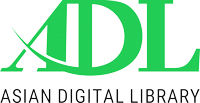The Trend, Style and Types of Qur’ānic Exegesis in Modern Times
Abstract
After the revelation of the Qur’ān, there are different languages depending on the time and place. The series of explanations and interpretations have been going on which has helped the Muslim Ummah in understanding and act upon the Qur’ānic teachings. The first stage is the era of the Prophet, the second stage is the era of the Companions, the third stage is the era of the followers and the fourth stage is the era of the followers. The trend is a clear path which commentator sets for himself in the interpretation of the Holy Qur'ān is his method. The ideas and thoughts of the commentator play a fundamental role in a commentary. It is as the clear path that the commentator sets for himself in the interpretation of the Holy Qur’an is his Manhāj. The ideas and thoughts of the commentator play an essential role in this context. In this article the commentaries of modern times have been discussed under Style, Types, Manhaj and trends. There are many commentaries have been represents the modern style. Among them Tafsı̇̄r Tadabur Qur’ān Amin Ahsan Isl┐h┘, Tafsı̇̄r Zia-ul-Qur’ān by P┘r Karam Shah Al-Azhar┘, Matalib-al-Furq┐n by Ghulam Ahmad Pervez, Tafsı̇̄r-al-Bayan by Javed Ahmad Ghamd┘ have been prominent in this respect.
Keywords: Tends, Types, Style of Qur’ānic Exegesis


















